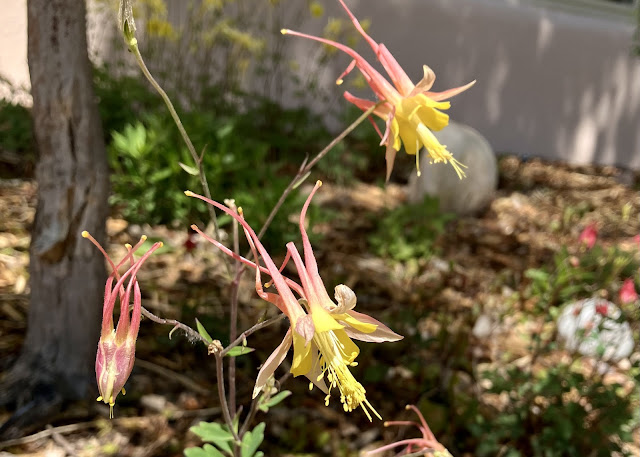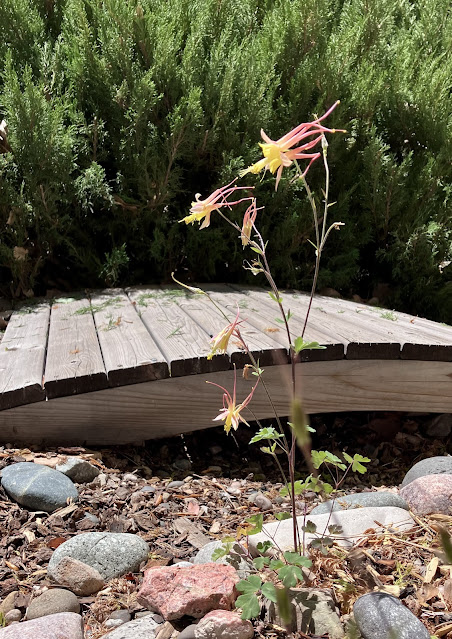A Perfect Mix
In my garden I have yellow columbines and red ones. The yellow are 'Swallowtail', with very long elegant spurs. The plants are big and form kind of a wild looking patch under the dining room windows.
The red ones are 'Little Lanterns' and they are tiny. The whole plant is diminutive, the flowers too. I have just a few clumps and they are hard to see in the early spring garden, they are so small and unassuming. You have to get up close.
And then, this year, this popped up in a spot between both columbines: a yellow flower with coral sepals. It's much bigger and taller than the tiny red ones, but smaller than the large yellow columbines.
Columbines get mixed up readily in the wild. Hummingbirds and bees pick up pollen from both when they are nearby and that exchanges genetic material. Different types of columbines have only recently evolved from a common ancestor, and their DNA structure is so similar that they easily hybridize.
I knew that because the beautiful colors of different columbines that I planted in my garden back east all hybridized and within a few years I had nothing but purple columbines everywhere. Nice enough, but not what I wanted.
I thought that might not happen here. Swallowtail is so big and with such long spurred flowers, and Little Lanterns is so small, a whole different looking plant.
But the bees and the hummers got there.
And the result is a perfect mix, right in between the two varieties. Just tall enough but not shooting up on big stalks like the Swallowtails. Elegant and nodding but not as clumpy and downward facing as the tiny Little Lanterns. A softer yellow, a more muted red.
Isn't nature amazing? All this genetic mixing and birds and insects doing their thing and whole new beings coming to life right under my windows.





Comments